
New Managing Director for Bellona Norway
The Board of the Bellona Foundation has appointed former Minister of Climate and the Environment Sveinung Rotevatn as Managing Director of Bellona No...
News
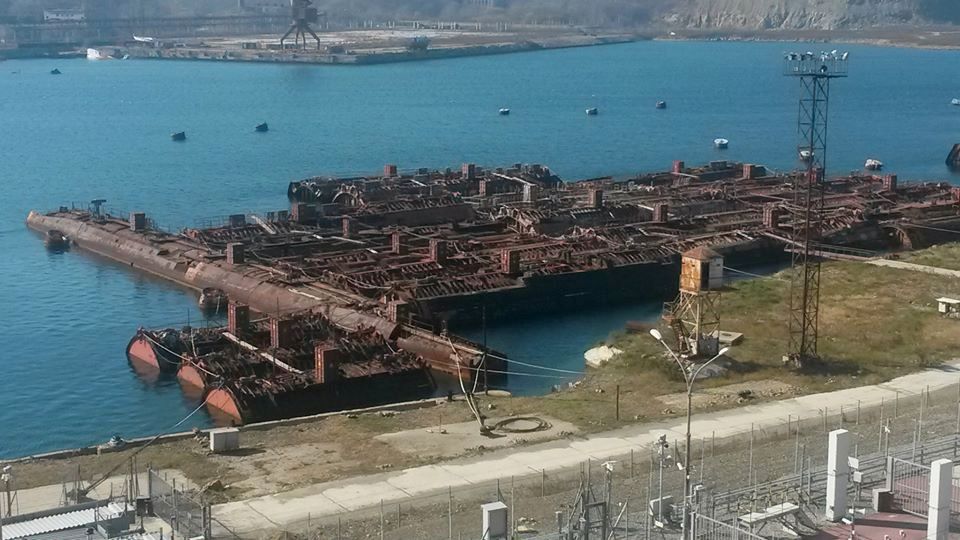
Publish date: October 28, 2014
Written by: Anna Kireeva, Charles Digges
News
VLADIVOSTOK – The last trainload laden with spent nuclear fuel from the Russian Naval Pacific Fleet’s decommissioned nuclear submarine left the Primorye Region in mid October, completing a decade-long process to remove more than 1000 used fuel assemblies.
Anatoly Zakharchyov, head of Russian state nuclear corporation’s nuclear submarine dismantlement division, 80 nuclear submarines had been taken out of commission by 2014 in Russia’s Far East.
“Our specialists have removed 42 trainloads [of spent nuclear fuel] from the Far East,” said Zakharchyov during a roundtable discussion at the Eighth International Environmental Forum, entitled Nature Without Borders. “The waste was sent to the Chelyabinsk Region, to the Mayak chemical combine.”
Since 2000, when DalRAO – a division of RosRAO, Russia’s agency charged with handling nuclear waste – started rehabilitation and safety work in the area, 75 nuclear submarines in Russia’s Pacific Fleet have been dismantled
During that period, a temporary floating storage facility for reactors was reconstructed, a long-term land storage facility for reactor chambers was built, another facility to isolate contaminated submarines went up, and a storage unit for solid radioactive waste went online. Additionally, 11,000 cubic meters of liquid radioactive waste was treated.
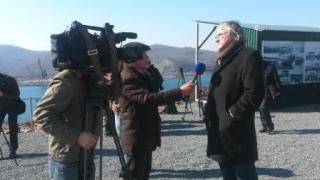
Alexander Nikitin, chairman of the Environmental Rights Center (ERC) Bellona, said Rosatom had carried out some serious work in the Primorye Region.
“When I was here a year and a half ago […], I was very surprised by what I saw,” he said during a technical tour of the DalRAO facility at Razboinik Wharf for Rosatom’s Public Council. “I though it would be much worse.”
Dismantling the Far East’s subs and nuclear service vessels
Zakharchyov said 80 decommissioned nuclear submarines had been put in Rosatom’s charge 10 years ago, of which 75 have been dismantled, four of which are being dismantled, with the remaining awaiting dismantlement.
He also spoke about two submarines that had been involved in serious accidents, and how they would be handled.
These include the K-431 submarine, whose reactor in 1985 exploded during refueling at Chazhma Bay, casting some 6 million curies of radioactive substances into the atmosphere and killing 10.
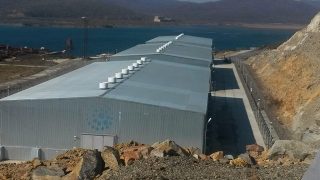
“These submarines [the K431 and the project no 610] had for 25 years been stored afloat in a dilapidated state, posing a threat for the regions ecological safety,” said Zakharchyov. “They are currently situated in closed housing on land, where they have been placed for long-term storage. Perhaps the future will bring safe technologies for their dismantlement.”
The shifting of the submarines’ three first reactor chambers to long-term land storage occurred this year. The number of such chambers is expected to rise to five and in subsequent years to 10.
It’s planned that by 2020, all 54 reactor blocks will be transferred to the safer conditions of on land long term at a specialized onshore facility at Cape Ustryts. It’s built to house 100 single chamber reactor blocks and 11 packed blocks from nuclear service vessels.
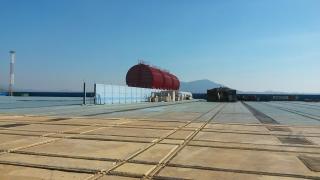
“The biggest danger is not the reactor blocks but the nuclear service ships,” said Zakharchyov in reference to vessels that have for years stored nuclear waste and spent nuclear fuel on board both while and subsequent to unloading and refuel nuclear fuel at sea. “Because of this, we have this year started liquidating nuclear service vessels on DalRAO’s territory.”
There are three such vessels in the Primorye Region, he said.
The first nuclear service vessels in Russia to ever be sent for dismantlement are the Lepse, and the Volodarsky in the country’s Murmansk Region.
Dispensing with liquid and solid radioactive waste
Since 2002, the DalRAO division operating in the closed city of Fokino has processed some 10,600 cubic meters of liquid radioactive waste. According to Zakharchyov, some 120 cubic meters still await processing.
“This year we will launch an on land technical base for reprocessing liquid radioactive waste as well as the necessary infrastructure,” he said. “The installation’s productivity will allow liquid radioactive waste reprocessing to occur entirely in the Far East area.”
He added that 15 storage units in the closed city of Fokino held some 20,400 cubic meters of solid radioactive waste.
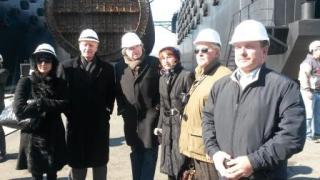
In 2016, construction will begin on a radioactive waste treatment center where waste will be compressed and prepared for long-term internment. The center is expected to be complete by 2020. A similar center will begin operation in the Murmansk Region in 2015.
“This is not a repository nor a long-term internment facility – the final internment area has not yet been decided,” Zakharchyov said.
ERC’s Nikitin said the situation with nuclear and radiological safety in the Far East is far better than what he’s observed in Northwest Russia.
“Murmansk’s situation is far more serious in terms of larger volumes [of waste] and, of course, project deadlines and their costs are very different than what we see in the Far East,” Nikitin said. “Specifically, there’s only 120 cubic meters of liquid radioactive waste remaining [in the Far East] where in the Murmansk region, that figure is for like 3000 – 400 cubic meters at Gremikha, and 2,500 at Andreyeva Bay.”
Nikitin added that, “best off all, I like that there is no spent nuclear fuel remaining in the Far East – they don’t have a problem called ‘Andreyeva Bay,’ which is already a household name.”

The Board of the Bellona Foundation has appointed former Minister of Climate and the Environment Sveinung Rotevatn as Managing Director of Bellona No...

Økokrim, Norway’s authority for investigating and prosecuting economic and environmental crime, has imposed a record fine on Equinor following a comp...

Our op-ed originally appeared in The Moscow Times. For more than three decades, Russia has been burdened with the remains of the Soviet ...

The United Nation’s COP30 global climate negotiations in Belém, Brazil ended this weekend with a watered-down resolution that failed to halt deforest...